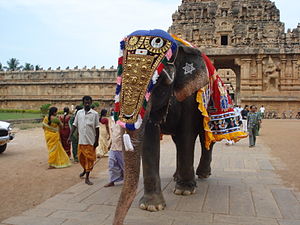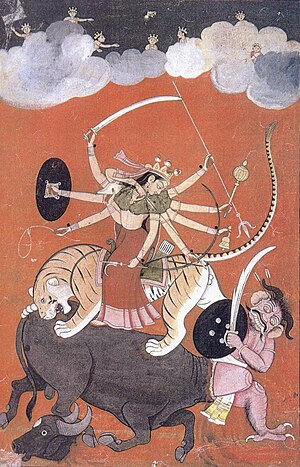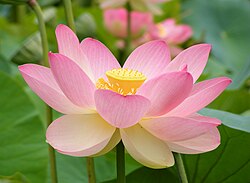Article:India - a vulnerable country on a fragile planet
Read community contributed articles on biodiversity & environment || Cultural practices & mythological stories related to Indian biodiversity || Checklists of Indian species || Conservation issues library || Official documents related to environment || NGOs, Blogs and Websites || Environment-related video collection || Plants of India || Mammals of India || Facebook || Twitter
A vulnerable country on a fragile planet
Since the beginning of civilization, man has been gazing at the stars, wondering if someone was looking down at him. As science progressed and our understanding of the natural world grew, we started asking a more mature question - was there life beyond our planet? There are an estimated 200 billion stars and 500 million habitable planets present in the Milky Way alone[1]. Was it possible for even one of those planets to have given birth to life? After thousands of years of looking at the skies and trillions of dollars spent on satellites, space shuttles and observatories, we have come to realize a deeply disturbing fact - that indeed, we are alone. As far as our most advanced telescopes can see, for billions and billions of miles around us, Planet Earth is the only planet with any sign of life on it...
The Pale Blue Dot
In 1990, when the space probe Voyager 1 had crossed Pluto and was heading into the void of deep space, for a relatively small moment, it turned back and took a picture of the Earth. Our planet, visible as a tiny dot in space, was dubbed the Pale Blue Dot by Carl Sagan. More recently, when NASA astronaut Sandra Magnus was asked how she viewed Earth while being in the International Space Station, she replied:
It looks very fragile from here, and it's very easy to take it for granted when we're living on it, when it seems so big and so massive. But it's not. It's very small and very fragile. When you look out the window, you notice how incredibly thin our atmosphere is, how such a fragile shell of air we have that surrounds our planet and makes it habitable. And you can read that in a book, but until you see it it doesn't strike home[2]
Our planet is indeed very fragile, but more fragile than the Earth is the life that inhabits it. Now we know that the recipe of life is not commonly available in the universe...it is rare and exceptional. And even on our planet, for the first two billion years of its existence, it had nothing but molten magma, methane and sulfur flowing on it. Life slowly arose over a period of the next two billion years, starting possibly from self-replicating RNA molecules and culminating in the mammals and flowering plants of today. It has taken three billion years of evolution to create this massive diversity of life forms around us. Nature played a coy role, slowly tinkering with the genes, chipping away unfit members of each species and creating new ones. Today there are an estimated 100 million species on our planet [3], many of whom we dont even know about!
Through the last two billion years of evolution, life (which by itself seems like a chemical reaction gone horribly out-of-control) has found ways to creep into the nook and corners of our planet. Life is found in the frosts of the northern Arctic to the hot Saharan deserts, from the depths of the oceans to the highest mountains. Life has found ways to exist even in the Mariana trench, where the pressure of the water above is equivalent to 50 jumbo jets piled onto your body![4].
Despite this gigantic spread of life on our planet, it is quite troubling when one finds absolutely no evidence of life for light-years around us! It makes one realize what a precious treasure our planet holds and how careful we must be to conserve the diversity of life on our planet.
Enter Man
If we think of geological time as one calendar year, with the earth being born in January, we could calculate life to have arisen sometime in May. Mankind came into existence in the last 7 minutes of December 31st, and the Industrial Age began only 3 seconds before the clock struck midnight! [5] In our 3 seconds of glory, we have managed to create a large footprint on our planet in the form of massive skyscrapers, huge industrial complexes, acres upon acres of agricultural land and sprawling urban complexes. We have also managed to blast mountains upon mountains for minerals, stones and granite, clear up swathes of forestland, fill our atmosphere with radiation-trapping gases and render countless animals and plants extinct, spiking up the rate of extinction to 100-1000 times higher than the natural rate [6]. Thanks to the most intelligent creature that ever walked on the surface of the earth, Earth has become even more fragile...
What are the causes of this high extinction rate being seen today? The foremost reason is the increase in human population. Reduced infant mortality, increased longevity and technological advancements in almost every field led to a population explosion, that put additional pressure on our natural resources. But we also cannot deny the fact that as a civilization, we have been greedy and irresponsible. We chopped down rainforests for making chocolates, without regards to its consequences. Human activity since the Industrial Revolution has increased the amount of greenhouse gases in the atmosphere. CO2 and methane have increased by 36% and 148% respectively since 1750.[7] These levels are much higher than at any time during the last 800,000 years, the period for which reliable data has been extracted from ice cores.[8][9]. Climate change coupled with habitat destruction has rung a death knell for 875 species since 1500s[10]. This number, however, represents only the documented extinctions; the upper bound of this number is 1,40,000 species per year![11]
India and biodiversity
We have long come to realize that one of the countries most affected with global climate change will be India. India occupies only 2.3% of the world's land mass but houses 6-12% of world's biodiversity. Many of these species are endemic to India; two of the most extreme cases are the amphibians and reptiles, of which 61% and 47% of the documented species respectively are found nowhere else on earth [12]. Not surprisingly, India is classified among world’s 17 megadiverse nations. Much of this biodiversity is precariously dependent on either the monsoons or the rivers that drain down from the Himalayan glaciers, both of which are severely threatened by the changing climate patterns. Climatic reasons aside, over 70% of the primary vegetation in large swathes of India, especially in the Western Ghats, The Eastern Himalayas and the Indo-Burma region has already been lost [13] and given the rate of population expansion and illegal encroachment on forest land, it wont be long before much of these regions are converted into wastelands.Fortunately or unfortunately, India’s biodiversity also assumes probably a very unique position in the world – it is intricately linked to the socio-cultural and economic practices of the land. For example, there are over 800 crop species with ~320 of their wild relatives and ~3000 medicinal plants in India[14] . According to a 2010 survey by National Geographic, 47% of Indians consume locally grown food, as opposed to 5-6% in western developed nations . A large percentage of the Indian population also depends on locally found flora and fauna for economic sustenance [15]. Thus, loss of biodiversity will not only perturb existing natural interactions but also impact the sources of livelihood of millions of Indians. In addition, the traditional knowledge associated with the species such as medicinal uses, economic importance and cultural practices will be severely affected.
What kind of traditional knowledge will get lost? Think about the all the stories about gods and goddesses your grandmothers told you - the story of how Lord Ganesha got his elephant head or why leaves of the Shami plant are given as good luck during Dussehra. Do you know or remember enough such stories to tell your children and your grandchildren? Think about all the herbal extracts and home-made remedies your mom made when you were sick. Imagine the various leaves and herbs your mom and grandmother used in their delightful recipes. Do you think you will be able to use them in another 50 years, when the habitats where these plants grew naturally are no longer existent? Numerous communities across India - like the Bishnois of Rajasthan and the tribals of Uttarakhand - have several interesting cultural practices intricately associated with local biodiversity. What would happen to the culture of these communities? Are you aware of the myriad facets of nature, the beauty of the hills, the serenity of the riverside, the feeling of sitting in lush meadows the way your father and grandfather were? Most of us urbanites in India are disturbingly disconnected with nature. And with the natural habitats on their way to becoming extinct, and the growing urbanization within India, these experiences will soon be distant memories...
What we decided to do about it
Every year, in the monsoons, we used to go out into the Western Ghats for treks. The magnificent Sahyadris used to be lush green in the monsoons, with streams of freshwater rolling down the hills and the moist air brushing against our skins. Even today you can go for hikes and treks and experience the majesty of the mountains. But everyone realizes that pristine natural areas are rapidly on the decline. There are developments like Lavasa in eco-sensitive areas. Mountains are being illegally mined for iron ore and gravel stone. Natural forests have been replaced with teak and tea plantations. Roads have been constructed on forestland and settlements have started to crop around such roads. All of us are seeing this happen in front of our own eyes, yet we feel incapable or indifferent towards stopping it. The common Indian mentality of Why should I care? Its someone else's business is a significant obstacle in conserving our resources from any further degradation.
With this rationale in mind, we decided to provide people reasons to care. We decided to create a resource that would help people - the common man - realize that yes, the loss of biodiversity was indeed their business, something that would affect their way of life. We thus conceived an online resource that would integrate numerous aspects of Indian biodiversity - from traditional knowledge to modern scientific information, from mythological stories to YouTube videos - and host them at one convenient, accessible location. We imagined a resource that would not only provide information about Indian biodiversity to anyone wanting it anytime anywhere in the world, but also enable them to add information themselves - much like Wikipedia. With these aims in mind, Project Brahma was born. As the name suggests, we hoped that this website would encompass all knowledge about Indian biodiversity and highlight the intricate associations between Indian biodiversity and its cultural fabric.
Progress of Project Brahma and what we intend to achieve
Our take on creating a biodiversity database is quite unique and different. No biodiversity database till now has used the Web 2.0 technologies and social networking tools as we have in the Indian context. Our target audience, unlike most biodiversity databases, is the common man - our aim is to make the common man more aware about biodiversity-related issues and engage him more in conservation activities. Our website is thus based on the software platform as well as the ethics of Wikipedia - making it the first open-source, open-access biodiversity database in the Indian context. In only the past year, we have developed abundant tools for engagement on the Brahma website -species pages which document all kinds of information about various Indian plants and mammals, means of extracting specific sets of information from the database, interactive quizzes related to environment and biodiversity, news articles and one of the largest collections of biodiversity-related videos on the world wide web. We have created highly active Facebook and Twitter pages, which have attracted over 200 followers in just 3 months of our public launch, thus helping us spread our message far and wide. In the coming future, we plan to expand the quality and quantity of each of these activities.
Project Brahma is not just limited to online activities. In the future, we plan to work closely with grassroots-level stakeholders such as NGOs, schools and colleges. Through a myriad of activities such as essay competitions, seminar series, biodiversity-documentation treks, summer projects, internships etc. we plan to increase the number of people touched by our activities. Through our initiatives, we hope that we are able to build a solid, knowledge-based foundation for all kinds of conservation activities in India.
We need you!
| “ | May you live in interesting times | ” |
| —An old Chinese curse | ||

Our country, given the trajectory we are on today, is headed in this very direction. Destruction of forests, mangroves, hunting of wildlife, illegal construction and encroachments have to stop. But at the same time, we need to band together and protect our resources TODAY! We need to make more people aware and we need to know the tools and the information to do so. A common Indian is more likely to rally for Goddess Tulsi than Ocimum tenuiflorum (The Holy Basil)...the point being cultural significance of local biodiversity is enormously relevant for biodiversity conservation. We, at Project Brahma, aim to do just that!
We need volunteers. We need lots of volunteers for grassroots level activities. We need people to shoot videos, people to organize seminars on Bird spotting, essay competitions in schools and to engage schools and NGOs in biodiversity documentation activities. We need people for online activities such as creating quizzes, adding YouTube videos to the website, compiling mythological stories and cultural associations of different communities around the country. We need people like you!
Final thoughts
I hope that through this essay, I have made you a little more aware of the environmental issues facing the world today. I also hope I have inspired atleast some of you to work towards environmental conservation, in whichever way you can. We do hope you join us in our goal to create an India where our trees and animals are not only worshiped but also steadfastly conserved, an India whose sociocultural fabric becomes the very driving force for environmental conservation, and an India which presents a shining ideal for the rest of the world in protecting its natural legacy. Your participation, however big or small, will go a long way in furthering the cause of biodiversity conservation in India!
References
- ^ Borenstein, Seth (2011-02-19). "Cosmic census finds crowd of planets in our galaxy". The Washington Post. Associated Press. Archived from the original on 2011-02-21. http://www.webcitation.org/5wg3VVKg4. Retrieved Aug 2, 2011.
- ^ Planet Earth a fragile oasis, astronauts say Retrieved: Aug 2, 2011
- ^ Just How Many Species Are There, Anyway? Retrieved: Aug 2, 2011
- ^ Life Is Found Thriving at Ocean's Deepest Point Retrieved: Aug 3, 2011
- ^ A Natural history timeline Retrieved: Aug 3, 2011
- ^ J.H.Lawton and R.M.May, Extinction rates, Oxford University Press, Oxford, UK
- ^ EPA (2007). "Recent Climate Change: Atmosphere Changes". Climate Change Science Program. United States Environmental Protection Agency. http://www.epa.gov/climatechange/science/recentac.html. Retrieved 21 April 2009.
- ^ Spahni, Renato; et al. (November 2005). "Atmospheric Methane and Nitrous Oxide of the Late Pleistocene from Antarctic Ice Cores". Science 310 (5752): 1317–1321. doi:10.1126/science.1120132. PMID 16311333.
- ^ Siegenthaler, Urs; et al. (November 2005). "Stable Carbon Cycle–Climate Relationship During the Late Pleistocene" (PDF). Science 310 (5752): 1313–1317. doi:10.1126/science.1120130. PMID 16311332. http://www.sciencemag.org/cgi/content/abstract/310/5752/1313. Retrieved 25 August 2010.
- ^ Summary of the 2009 update of the IUCN Red List, http://www.iucn.org/media/materials/releases/?4143/Extinction-crisis-continues-apace
- ^ S.L. Pimm, G.J. Russell, J.L. Gittleman and T.M. Brooks, The Future of Biodiversity, Science 269: 347–350 (1995)
- ^ India’s Fourth National Report to the Convention on Biological Diversity (2009) Retrieved: August 13, 2011
- ^ Biodiversity Hotspots.org
- ^ Gautam, P, C Jacob, G Venkatramani, and Y Singh. Biodiversity and Indian Economy ThinkIndia Quarterly, Vol.13:10
- ^ Greendex: Survey of Sustainable Consumption - National Geographic by the National Geographic Society. Retrieved: August 13, 2011
Semantic tags
Browse all Semantic Tags associated with this page
- Browse all Semantic Tags associated with this page
- Find more pages and articles created by the community by clicking this link.
| Title | A vulnerable country on a fragile planet | Article is on this general topic | General interest | Author | Gaurav Moghe |
|---|---|---|---|---|---|
| Specific location(s) where study was conducted | Not noted | General region where study was conducted | Not noted | State where study was conducted | Pan-India |
| Institutional affiliation | Not noted | Institution located at | Not noted | Institution based around | Not noted |
| Species Group | Not noted | User ID | User:Not noted | Page creation date | 2011/08/18 |
Share this page:





